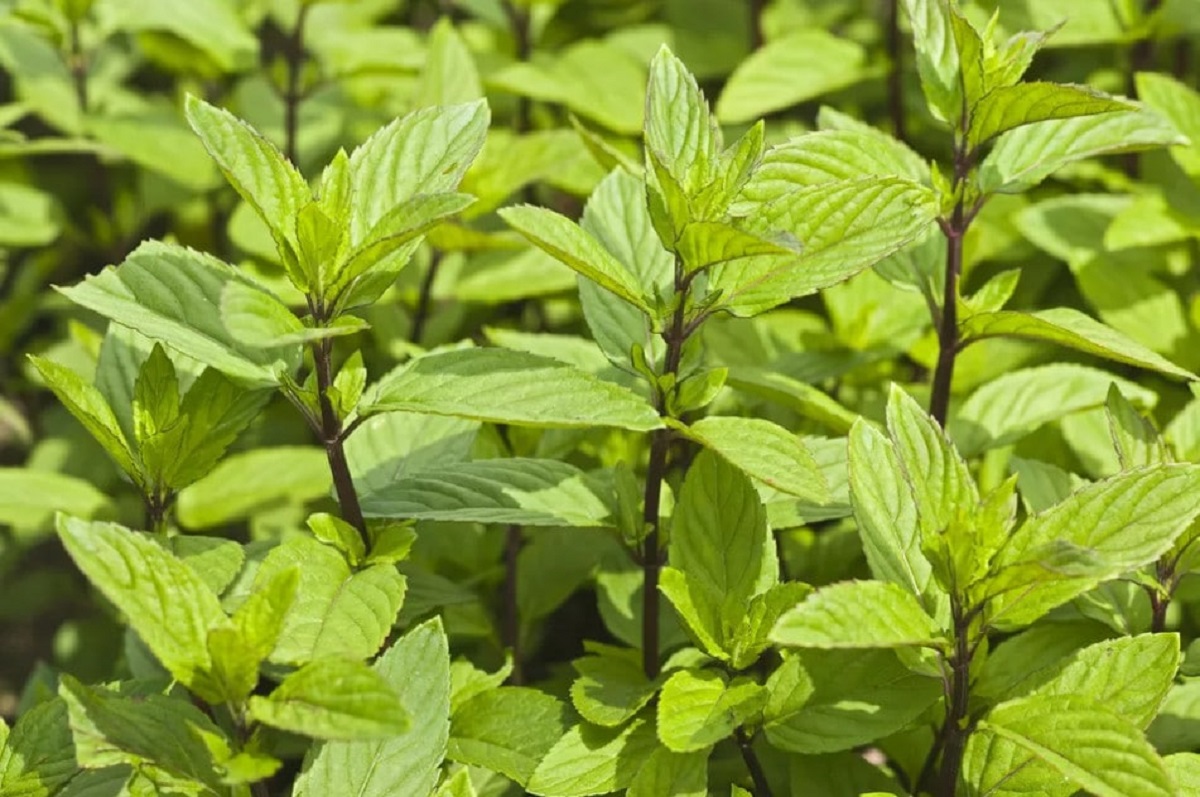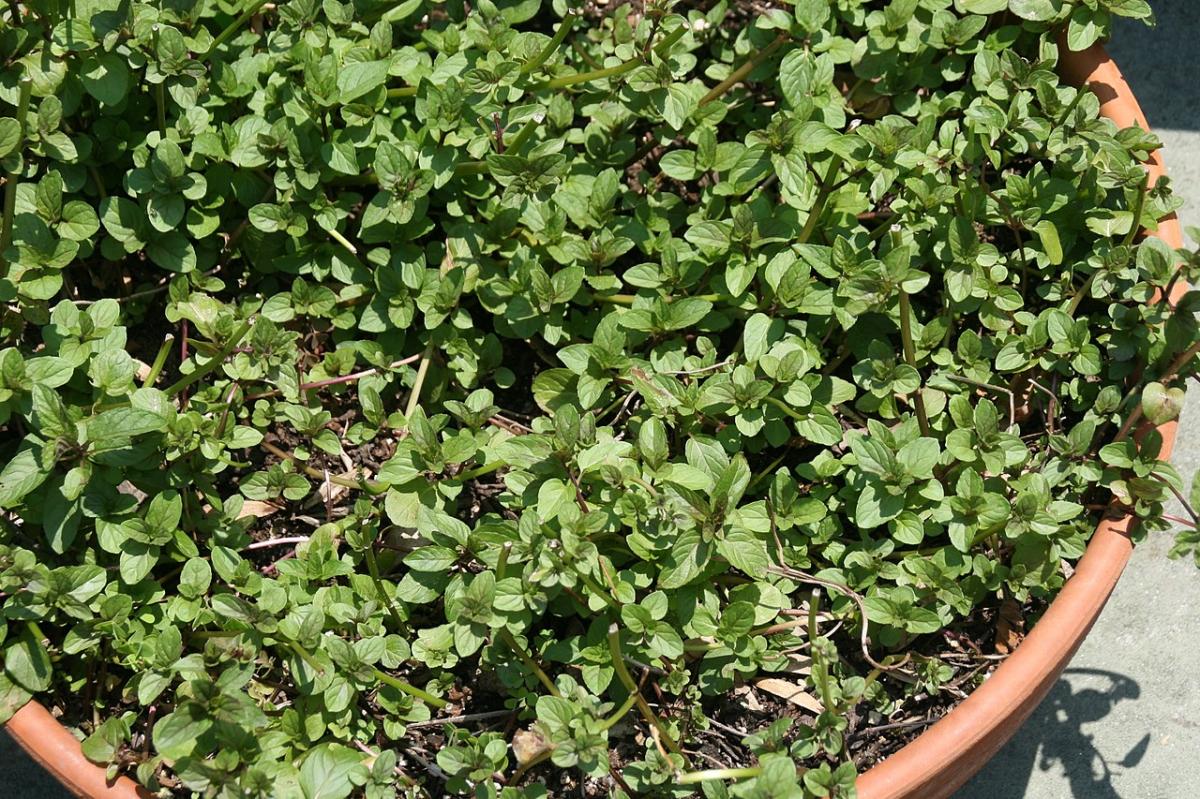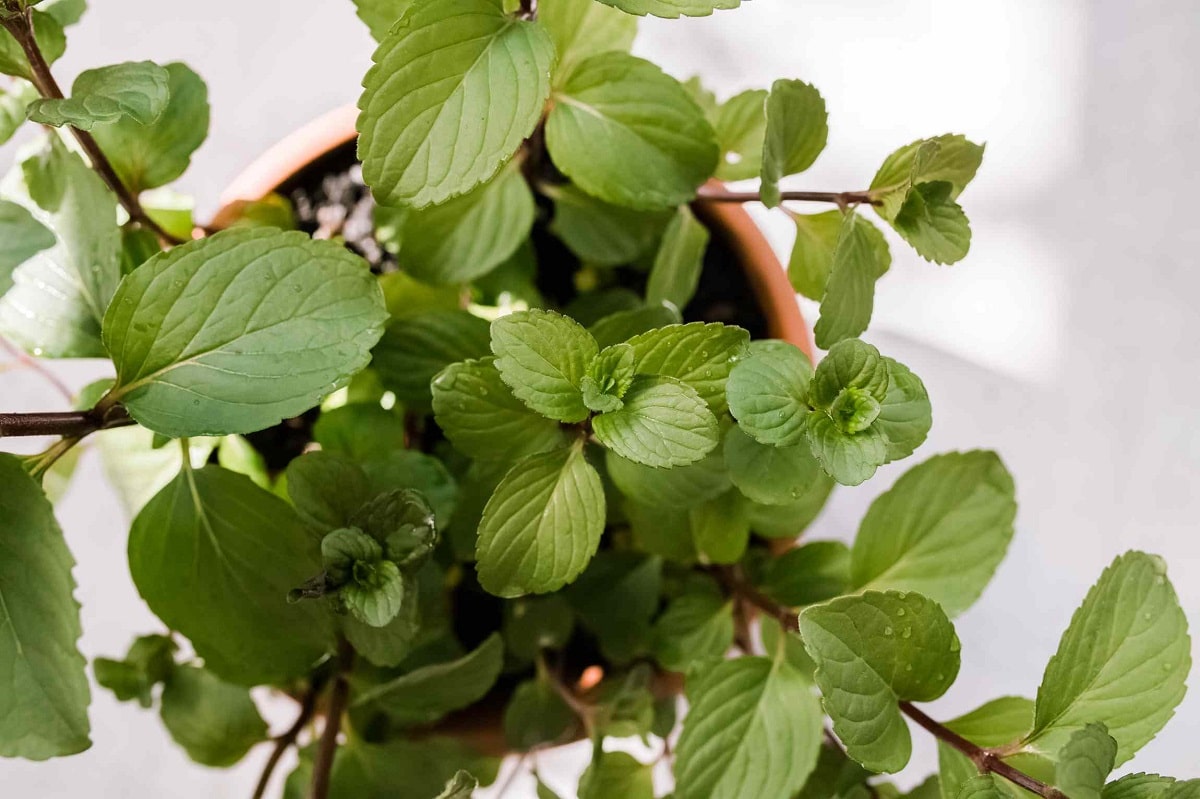
The chocolate mint scientifically known as Mentha x piperita 'Citrata' it is an interesting mint variety due to its true chocolate flavor. Used in confectionery, this plant is easy to grow and particularly hardy. It is a variety of mint whose leaves give off a subtle aroma of chocolate. It is a hardy and perennial herb, which is grown both in the ground and in pots, since it only grows about 40 to 60 cm in height. Its leaves are delicious in infusion, in tea or hot chocolate. They also flavor desserts. They are planted in spring (April to June) for a harvest from March to October.
Mint is a bushy aromatic plant with very fragrant foliage. It is part of the Lamiaceae family, like lemon balm or lemon balm. Grow it preferably in a partially shaded placeAlthough you should know that it normally lasts for two or three years because, beyond that, it tends to run out and be less productive. In addition, you have to choose carefully where you want to plant it: mint spreads very quickly thanks to its creeping roots. It is ideal to install in the garden because mint is known to It drives away unwanted insects from the garden, such as aphids and ants, as well as certain rodents.
Characteristics of Chocolate Mint
Chocolate mint is a variety of Mentha. This type of herb has a stronger odor than peppermint conventionally used as an aromatic and medicinal plant. The variety that we present to you is particularly interesting in the kitchen due to its mint chocolate flavor. Like most mints, this one has deep green lanceolate leaves; sometimes the edges are more or less dark brown.
The flowers are small and white to pale purple in color, and we can see them actually. There are many varieties of mint, the most famous of which are spearmint, peppermint, pennyroyal and lemon mint.. Depending on the variety, the leaves will offer you a whole range of aromas. In the kitchen, use them from starter to dessert, to flavor salads and raw vegetables, summer barbecue, etc. The leaves are also delicious in infusion, in tea or hot chocolate.
Plantation

Image - Wikimedia / David J. Stang
Sowing takes place in spring (April to June) or at the end of summer (August to September). Preferably, you should choose a place with partial shade, even if the mint can settle almost anywhere. It can be sown in pots and in the ground easily.
On the floor
Chocolate mint likes rich, fertile and fresh soils. If the soil is poor, add compost very mature a few months before planting, scratching to a depth of 5 cm, after having decompressed the soil well. To plant in the ground, the plants need a space of 40 cm in all directions. Soak the root ball in water for a few moments before planting.
Dig a hole, place the root ball and cover it with fine earth. Then tamp it down and water to keep the soil moist. During the cultivation, it has to be watered moderately, mainly in hot climates.
Potted
You must first add a layer of gravel to the bottom of the pot to facilitate drainage.. Fill it in with potting soil, such as the universal substrate. Place the chocolate mint very delicately inside the container and finish filling it with earth. Then you just have to tamp and water to keep the soil moist.
While growing, you need to water regularly, about once a week (or more in times of drought). Likewise, it must be transplanted every year. In late autumn, cut the stems 10 cm above the ground to encourage regrowth. Mint can be propagated by dividing the bushes in the spring, or by cuttings.
Harvest
To get good quality, herbs must be harvested at the right time. The objective is to obtain the highest concentration of active ingredients and the best possible aroma. The plants must be harvested after one or two days without rain, because at that time their concentration of active principles is maximum. Obviously, only the healthy and clean parts of the chocolate mint are harvested. Preferably use a cutter or a sharp knife to cut them. Regular cutting promotes plant branching and bushy growth.
The ideal time to harvest depends on the parts of the plant you intend to user. Flowers should be picked in full bloom when fully open. They are usually collected just before flowering, when they are fully developed, but still young. At this point, the plant has not yet expended energy on flowering and the leaves have a high content of active ingredients. The fruits are harvested when they are fully ripe.
Chocolate Mint care

Most herbs, and mints in particular, don't need a lot of water. However, regular watering is important. But, stagnation must be avoided! The larger the leaves of a plant, the more intense the evaporation and the higher the water requirement. To water the plants it is better to use warm water, tap water or rain, but previously collected in a container.
The right hours to water are in the morning or in the afternoon. Avoid wetting plants at night as they do not dry out completely and are more likely to get a fungal infection (such as powdery mildew). It is also advisable to wet only the soil and not the plant. Mints grow well in poor soils and therefore don't need a lot of fertilizer.
To achieve a compact size, it must be pruned in spring. This will bring out lower branches. It is important not to cut down to the woody part. If done regularly, it will branch out and form a shrubby structure. To do this job, you need scissors or a sharp knife.
Herbs contain valuable essential oils. Incorrect drying and storage destroys its properties and causes it to lose aroma and flavor.. The color of the flowers also fades. Chocolate mint should be dried in a warm and airy environment, but not in direct sunlight, which alters its active ingredients! Herbs are usually hung, after they have been tied in bunches not tightly, in shady but dry places.